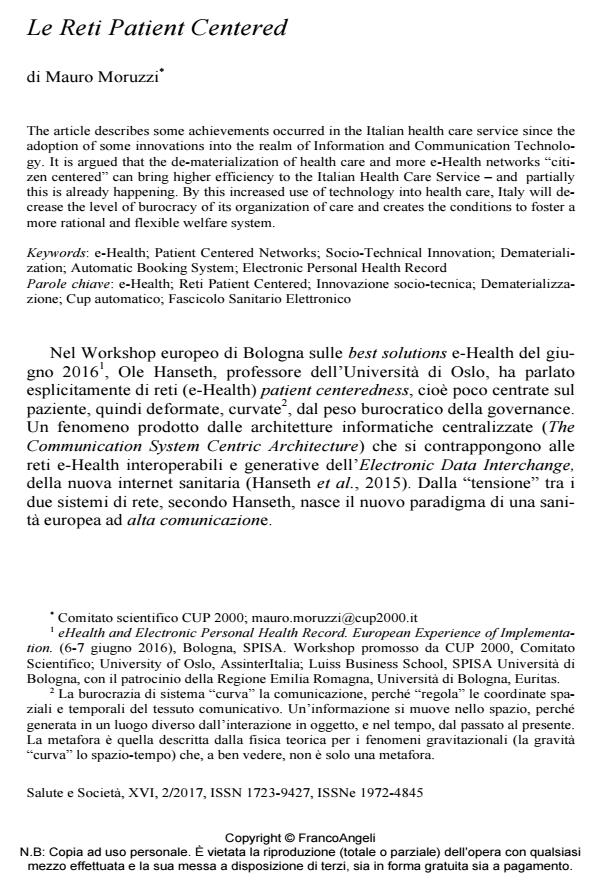Le Reti Patient Centered
Journal title SALUTE E SOCIETÀ
Author/s Mauro Moruzzi
Publishing Year 2017 Issue 2017/2
Language Italian Pages 11 P. 85-95 File size 103 KB
DOI 10.3280/SES2017-002007
DOI is like a bar code for intellectual property: to have more infomation
click here
Below, you can see the article first page
If you want to buy this article in PDF format, you can do it, following the instructions to buy download credits

FrancoAngeli is member of Publishers International Linking Association, Inc (PILA), a not-for-profit association which run the CrossRef service enabling links to and from online scholarly content.
The article describes some achievements occurred in the Italian health care service since the adoption of some innovations into the realm of Information and Communication Technology. It is argued that the de-materialization of health care and more e-Health networks "citizen centered" can bring higher efficiency to the Italian Health Care Service - and partially this is already happening. By this increased use of technology into health care, Italy will decrease the level of burocracy of its organization of care and creates the conditions to foster a more rational and flexible welfare system.
Keywords: E-Health; Patient Centered Networks; Socio-Technical Innovation; Dematerialization; Automatic Booking System; Electronic Personal Health Record
Mauro Moruzzi, Le Reti Patient Centered in "SALUTE E SOCIETÀ" 2/2017, pp 85-95, DOI: 10.3280/SES2017-002007